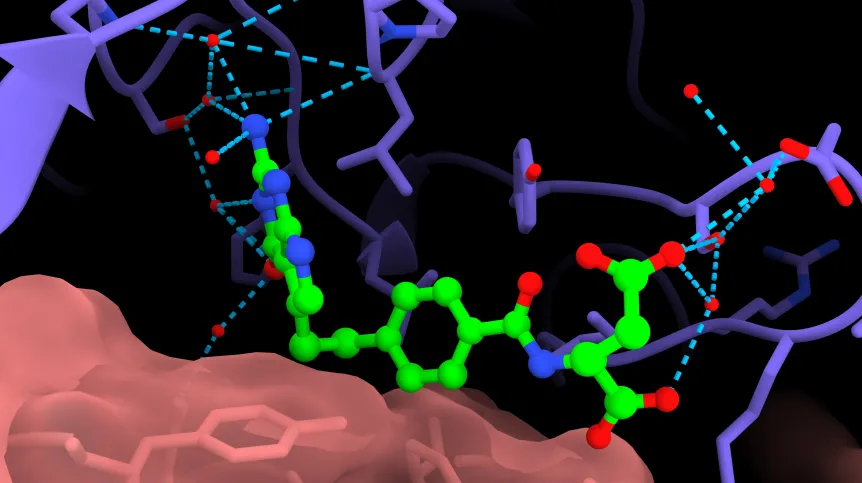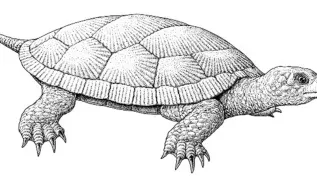
Structural biology will use advanced methods such as AI-supported electron microscopy. This will change the landscape of life sciences. However, we must not forget about the key importance of experimental research, the International Institute of Molecular and Cell Biology in Warsaw (IIMCB) says in summary of the iNext meeting.
'AI already effectively supports structural biologists in their work on determining the atomic structure of complex chemical molecules from living organisms. With the inevitable technological development, AI will influence further areas of research, such as data analysis, including imaging in biology and modelling large systems', Professor Marcin Nowotny said during the meeting organised on 8-10 July at the SOLARIS National Synchrotron Radiation Centre in Kraków.
The scientist admitted that the limitations of AI-based techniques mean that they will not replace experimental methods in the near future. However, they can greatly facilitate and accelerate structural biology research.
'We do not know whether computers will provide us with a cure for cancer or an elixir of eternal youth, but new, increasingly effective tools will certainly allow us to conduct scientific research more easily, faster and cheaper, and this gives hope for solving the most pressing medical problems in the coming decades', Nowotny added.
Professor Matthias Bochtler from IIMCB emphasised that the academic community should not thoughtlessly use ready-made tools created by companies, but instead actively participate in their creation.
As the experts explain in the IIMCB press release, thanks to structural biology, it is possible, for example, to understand how diseases arise, including genetic ones, and how viruses multiply. Structural biology also makes it possible to visualize how drugs attach to molecules in the cell. Thanks to this, scientists can optimise this process and, consequently, create new therapies or improve the properties of existing drugs.
The Jagiellonian University synchrotron is a multidisciplinary research device built on a ring plan. It accelerates electrons and is a source of exceptional light - synchrotron radiation, which allows scientists to look deep into matter. Research lines, an extremely efficient microscopes precisely capture any fragment of reality at the level of molecules and atoms.
The SOLARIS Centre serves physicists and chemists, among others, and work is currently underway at the synchrotron on building a modern measuring station for protein crystallography, which will benefit structural biologists. It will be used, among other things, in projects aimed at designing new drugs. Next to the synchrotron, there is also the SOLARIS Electron Cryomicroscopy (Cryo-EM) laboratory. With electron cryomicroscopy, scientists can freeze biomolecules in motion and present them with atomic resolution.
IIMCB experts emphasise that in many cases, current computer predictions of the atomic structure of proteins do not differ in quality from structures determined by experimental methods, and their preparation takes seconds, not years. The next challenge is the application of these methods to predict changes in the shape of molecules or to identify new substances that can become drugs.
'The dynamic development of structural biology in recent years enables us to learn about the molecular basis of diseases. Thanks to this, it is possible to develop therapies that are highly effective with minimal side effects. We are now one step away from using structural techniques, such as electron cryotomography, in the diagnosis of cancer or neurodegenerative diseases. We do not want to miss this opportunity in Poland', Miłosz Ruszkowski, Head of the Department of Structural Biology of Eukaryotes at the Institute of Bioorganic Chemistry of the Polish Academy of Sciences, said during the conference.
Dr. Piotr Wilk from the Jagiellonian University and Claudia Alen Amaro from Instruct-Eric added that institutions financing science must be aware that hypotheses generated by AI cannot replace experimental research. They can only accelerate it.
The meeting in Kraków was organized by European consortia coordinating access to large research infrastructures (scientific equipment platforms): iNext Discovery and INSTRUCT-ERIC. Polish institutions belong to the former and are seeking access to the latter. Polish co-organizers of the meeting were: the SOLARIS National Synchrotron Radiation Centre (Jagiellonian University, Kraków), the Institute of Bioorganic Chemistry of the Polish Academy of Sciences (Poznań), the International Institute of Molecular and Cell Biology in Warsaw (IIMCB) and the Małopolska Center of Biotechnology in Kraków.
PAP - Science in Poland
kol/ agt/ kap/
tr. RL













